Planting a Mulberry Tree is a quick way to invite birds and other wildlife to your yard. Once the tree starts producing fruit, you’ll be delighted to see the many types of birds enjoying those juicy red berries. If you’re fortunate enough to have a Dwarf Weeping Mulberry in your garden you can enjoy watching all the regular visitors to your Mulberry. While birds find the tree highly attractive, did you know that you too can eat the fruit from the Mulberry Tree?
The White Mulberry (Morus Alba) is the most common in Ontario, and can either be the Fruiting or Non-Fruiting variety. If you love birds and/or the taste of the mulberry, then you’ll want the fruit bearing type (Morus Alba Pendula). However, make sure you plant it away from driveways and sidewalks as they can be quite messy with dropping berries as they mature.
The Non-Fruiting variety (Morus Alba Chaparral) provides all the beauty and resilience of the other without the mess of the berries or the animals eating the berries. They work well in landscapes and still make great nesting areas for birds.
The best part about these trees is that they are adaptable and very forgiving. A vigorous grower, the mulberry is a fairly disease-free plant that’s tolerant of clay soil. A good choice for the beginner gardener. Plant your weeping mulberry in well drained soil with full sun, or partial shade and you’ll find it is a hardy, easy-to-care-for tree that will produce mulberries every year right in to late summer.
There are many rules of thumb when it comes to trimming and pruning your mulberry. So we went to the experts at Sheridan Nurseries to get advice for growing these beautiful trees in our climate. “The Mulberry is an aggressive grower and should be trimmed,” says Brenda Luckhardt, Development Manager at Sheridan Nurseries. Whether you prefer the tidy or shaggy look, it’s best to keep the leaves from cascading onto the ground. “Give them a really hard pruning in April before the plant blooms, and then you can trim it as necessary” The mid-summer trimming will encourage new growth and shape the tree nicely.
The key to pruning the weeping mulberry is to cut off any vertical or upward growing branches. Cut branches in a way that will help you achieve the shaping that you prefer. Rule of thumb? If it weeps, it works. It’s good to get underneath the treat and cut out any dead and/or crossing branches.
A little bit of grooming and you’ve got yourself a beautiful tree perfect for bird watching. And if you can pick the berries before the birds get to them, here are tips on baking with mulberries or you try out these tasty Mulberry Fruit Recipes.

NotQuiteNigella has a berry special recipe for Mulberry and Pinot Noir pie
Thanks to Lorna Jefferies for all of the beautiful bird photos you see in this blog. You can see more of her talented work here.

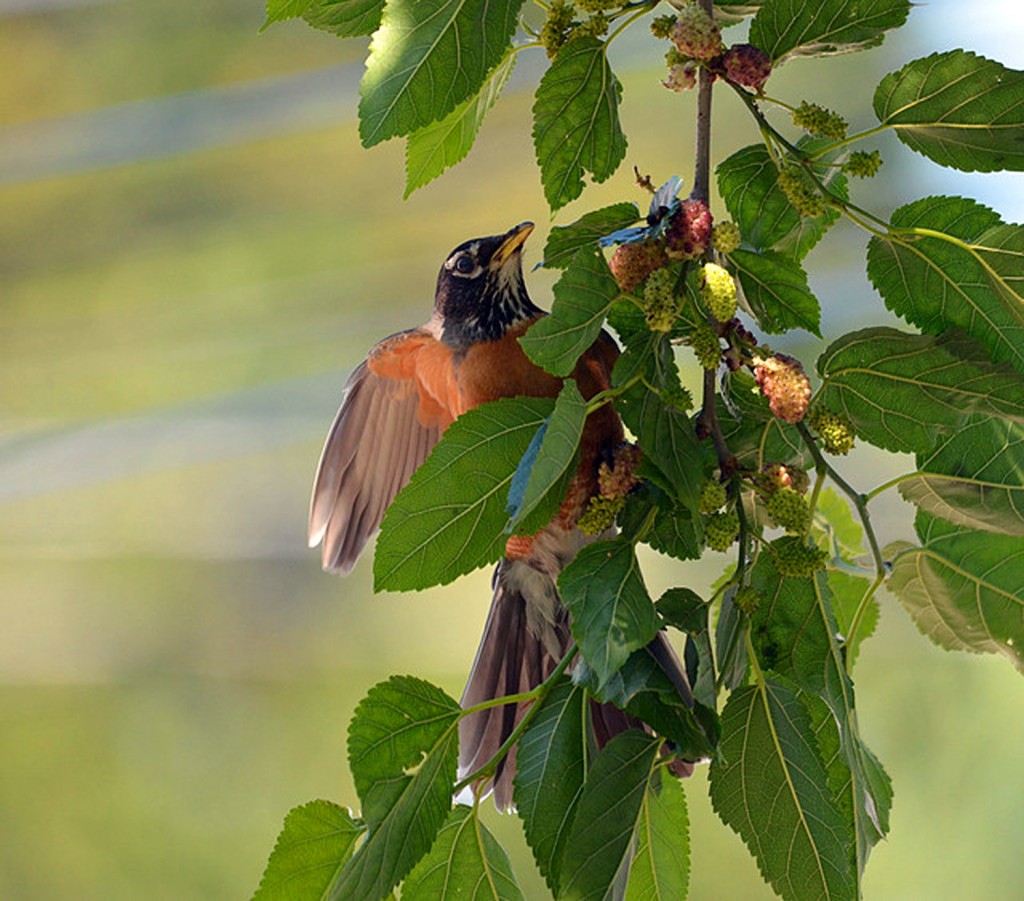
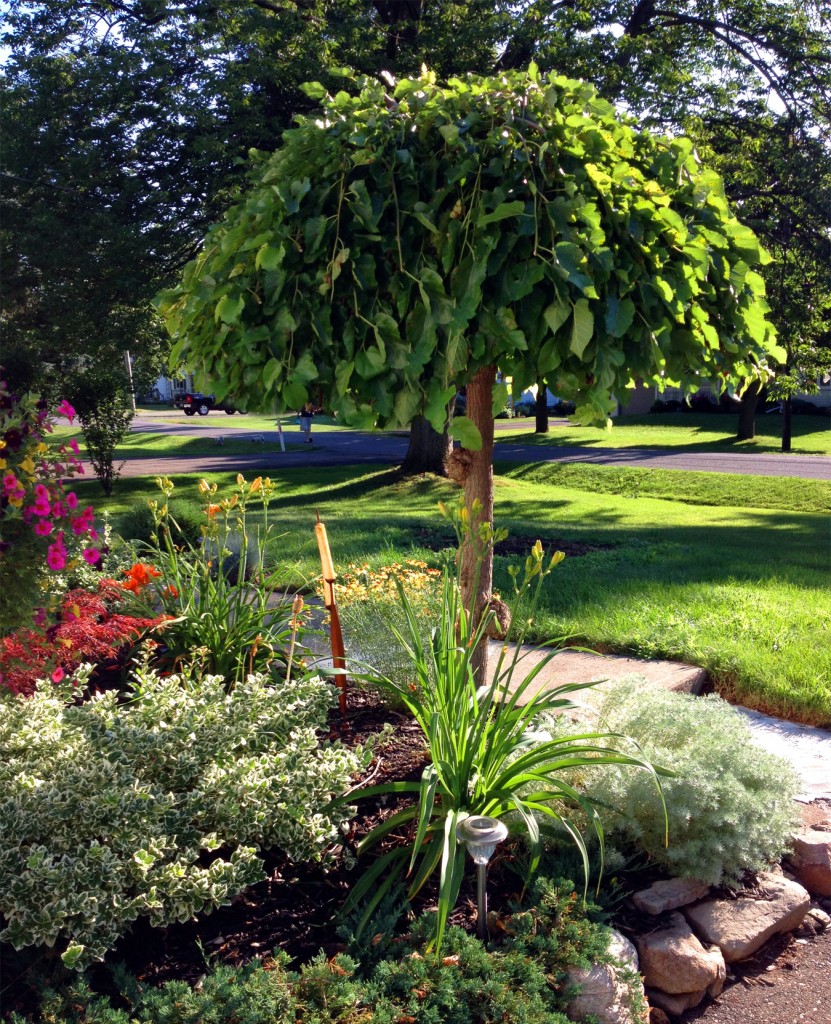
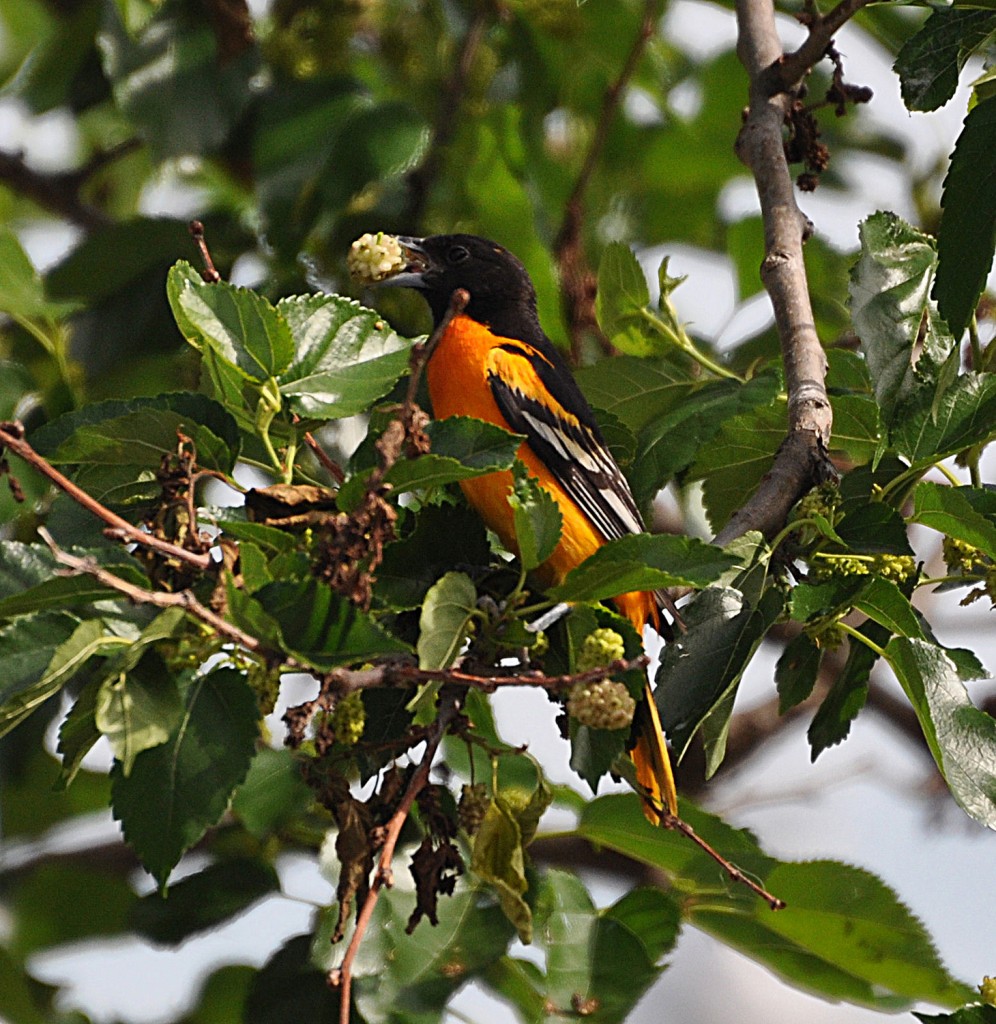
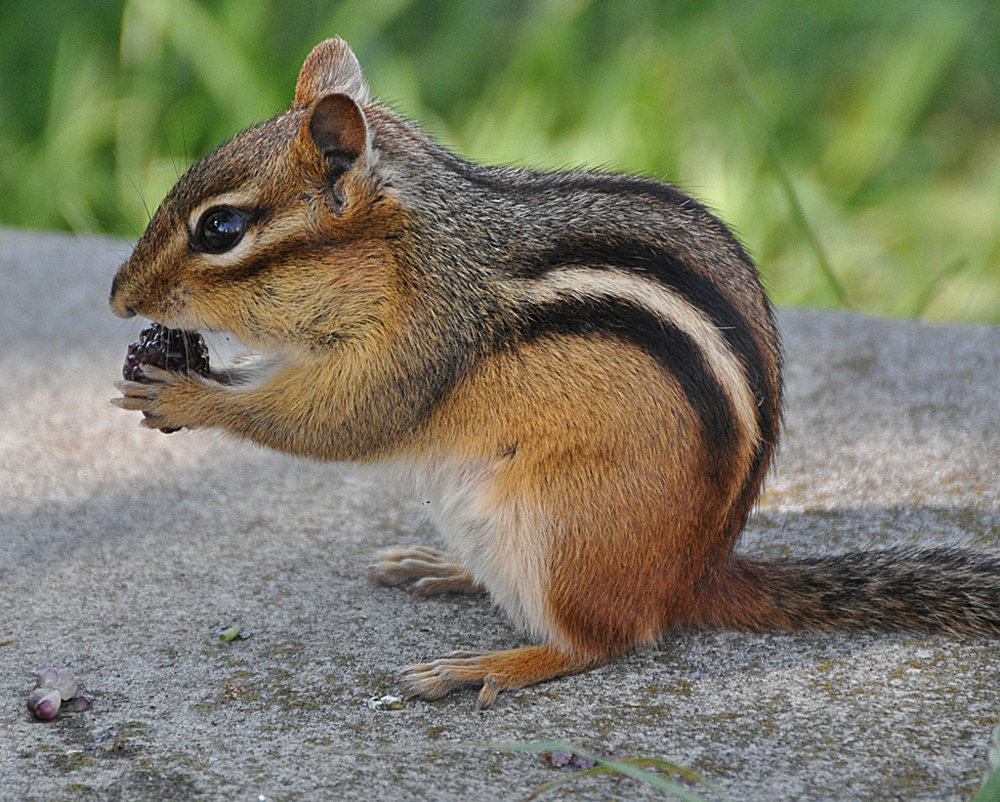

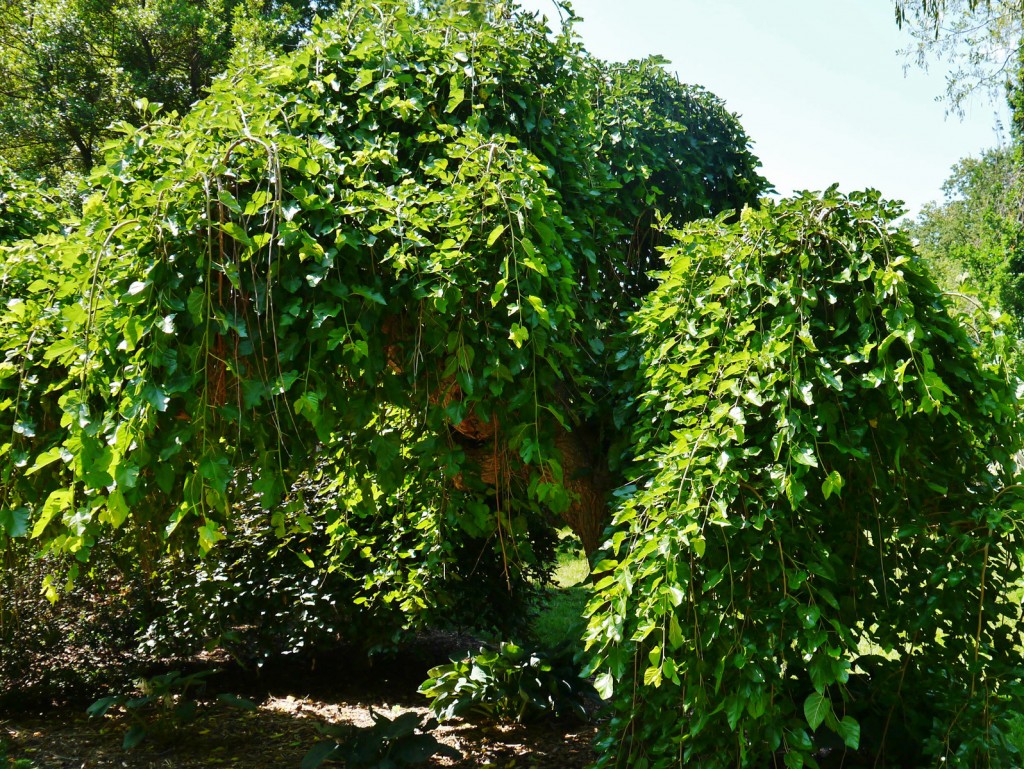
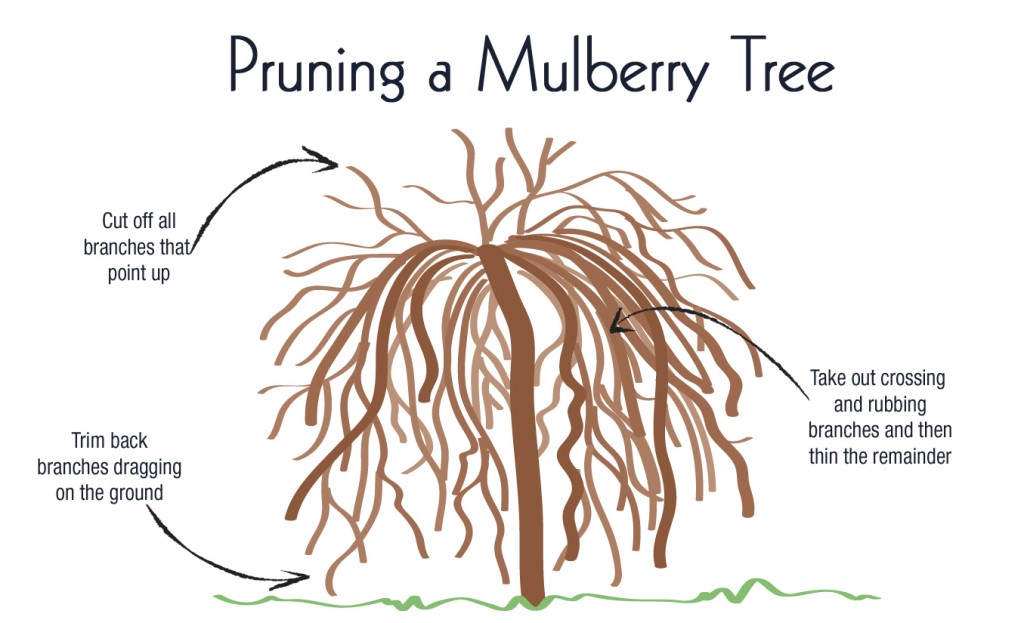
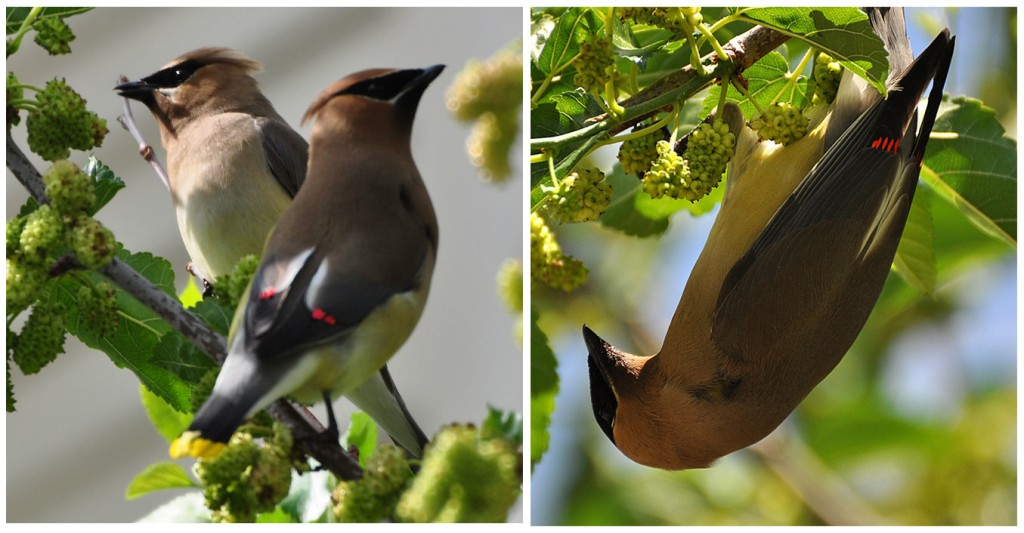
Thanks great info. Regards Ed